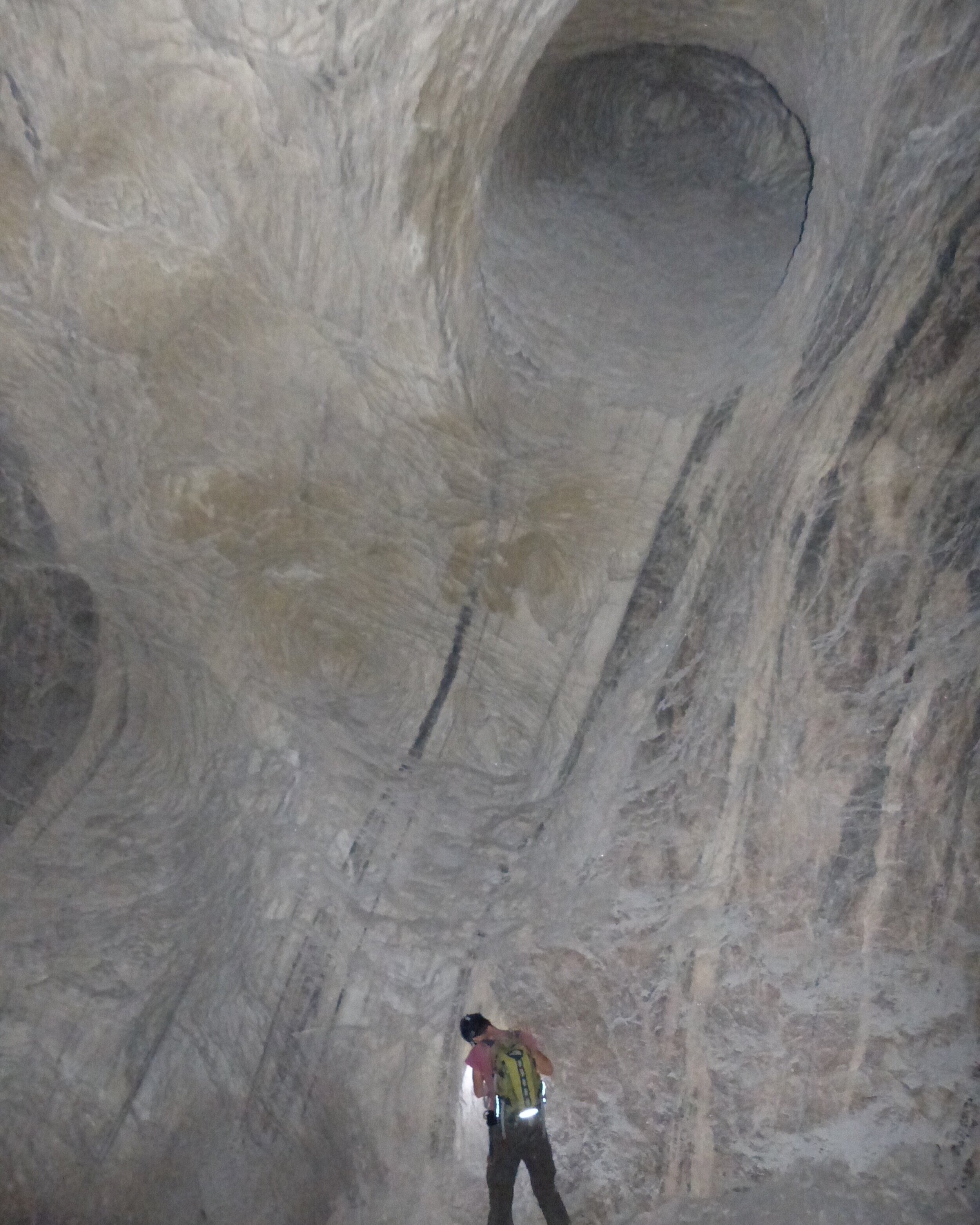THE INTERNAL STRUCTURE OF SALT DIAPIRS
(lusitanian & Algarve Basins, portugal)
Importance for underground storage (gas, electricity, nuclear, CCUS), chemical electricity generation and geothermal energy
(On-demand field-based training course)
Introduction
-
Exploring salt diapirs to create underground storage facilities requires an awareness of the main geotechnical problematics that may arise and compromise the safe construction of caverns in salt domes.
This course is especially design for professional geologists, engineers and geophysicists as well as energy investors, dealing with the planning of storage solutions on salt diapirs. It will raise awareness of the technical issues and complexities that may arise during the creation of storage infrastructures inside salt structures, as well as highlighting the main geohazards that may technically or financially compromise the development of such projects.
This field course is based on a research developed by the instructors over 5 years in the areas visited and published between 2016 and 2020. Participants will understand salt tectonics concepts while observing world class field examples, which include visiting a Salt Mine in Algarve, a gypsum quarry and several other outcrops of salt structures in Central Portugal.
-
Physical requirements: Easy. Not recommended for claustrophobic individuals.
Duration: 4 days
Type: Classroom (0,5 days) Field ( 3,5 days)
Area: Central Algarve and Central Costal Portugal
Target audience: Geologists, engineers, Geophysicists, Drilling Engineers, Geology Students, Field Geologists, Structural Geologists, Mining Geologists, CCUS engineers, Geophysicists, Investors and Teachers.
Prerequisites: Basic geological principles
What’s Included*: Transportation, meals, accommodation in 4 stars hotel, professional guidance, digital field guidebook, insurance and Geo Logica t-shirt.
Number of participants: 10 to 15
Course Cost: From 3250€ (excl. tax) euros (depending on the number of participants)*
-
Ian Davison: Visiting Professor at the Department of Earth Sciences, Royal Holloway, University of London and former Founder and Director of the Earthmoves Ltd. A reference in South Atlantic geology. Ian is one of the most prominent salt tectonics experts in the world with more than 100 publications in the most relevant scientific journals.
Pedro Barreto: Founder of Geo Logica, graduated in Geology from University of Lisbon and has a Master’s degree in Tectonics from Royal Holloway, University of London. Former Senior structural geologist at CGG NPA Satellite Mapping where developed extensive field work in Europe and Africa. Former Senior New Ventures and Exploration Geologist at Partex O&G (Gulbenkian Foundation) where it was Lead Project Geologist for Portuguese exploration. Expert in structural geology from rifting to compressional settings with geological research in Portugal, North Africa, Middle East, East Africa, Brazil and Angola. Co- Author of several publications and presentations on rifting and salt-tectonics.
Boudinaged ultrabasic lamprophyre dyke with ‘jigsaw’ breccia texture and halite filling veins. Loulé salt mine, Algarve, Portugal.
Pure white coarse-grained halite shear zones rich in CO2 with elliptical blow-out hole in roof of the mine gallery caused by overpressured gas. Loulé salt mine, Algarve, Portugal.
Course Objectives
-
- Origin and complexity of evaporitic sequences (homogenous, heterogenous and layered evaporitic sequences) ;
- Halokinesis: Formation, geometries and types of salt walls and diapirs;
- Internal structure and deformation of diapirs (folding and faulting).
-
- Historical overview: from mining and well data to Seismic Vintage Vs broadband data;
- Seismic noise, Internal reflections and high impedance bodies (stringers, rafts and dykes);
- Modelling implication of salt velocities and geometry on Post Stack Depth Migration (PSDM) processing;
- Autochthonous Vs allochthonous salt bodies: definition of base of salt and depth conversion in estimating salt depth and volume;
- Problematics behind delimiting lateral extent of a salt body;
-
- Type and problematics behind internal rheological contrasts;
- Origin and problematics of CO2 and methane blowouts;
- Implications of salt bodies on thermal gradient;
- Cap rock development and the salt diapir/ sediment interface on top and flanks of diapirs.
Albufeira Diapir at Praia da Baleeira, Algarve, Portugal
Internal Structure of Caldas da Rainha- Óbidos Diapir, Óbidos, Portugal
Course Description
-
For several decades that salt diapirs have been used to store energy, mainly in the form of natural gas, or energy waste, mainly in the form of toxic and nuclear waste.
Recently, there has been a growing interest in using these geological structures to store hydrogen and electricity, due to high demand of energy storage solutions related with the ongoing energy transition process.
Although in general salt diapirs and salt walls are extremely reliable to be used as large and safe underground storage system, not all salt structures present the right characteristics to allow a simple implementation of an engineering project.
Decades of research have shown that salt structures are much more complex than usually interpreted. This complexity can in fact compromise the viability of a project. Salt sequences and related structures has been extensively studied over the years, mainly due to its implications on hydrocarbon exploration, and allowed to build a robust understanding of the main processes and problematics behind internal structure of salt diapirs. The application of this knowledge is vital for the successful planing of future underground storage facilities.
It is decisively crucial for professionals working on underground storage projects in salt structures (Natural Gas, Hydrogen, Electricity and Nuclear) to acquire competences in the geological interpretation of such structures, particularly at the time of assisting engineering design and drilling teams to accurately calculate maximum storage capacity, while mitigating and preventing important issues related to drilling hazards (pore pressure prediction, overpressure zones, gas blowouts, etc).
Geo Logica created a course to help professionals to understand the internal complexity of salt structures based on the experience gathered by the instructors in many salt provinces around the world. The course content presents a set of objectives that will allow a professional to understand, anticipate and mitigate main geological problematics and issues that will have a direct impact on the planning and design of underground storage solutions.
The course main goal is to expose professionals to salt tectonic concepts and processes that might have a major impact in their daily work routines. To visualise and understand these concepts live in the field will provide participants with an extra dimension to understanding the issues of salt tectonics in salt cavern construction, usually only imagined or visualised on seismic datasets or in drill cores.
-
On the first day participants will have an half-day classroom session introducing the main concepts and problematics of salt tectonics and its importance for planning underground gas storage. This includes understanding the origin and complexity of evaporitic sequences, halokinesis processes and problematics behind imaging and interpretation of the internal structure of salt diapirs.
On the second day the group will visit the Campina de Cima Salt Mine in Loulé, Algarve. Here participants will examine the internal composition of a salt diapir, recognise internal heterogeneities such different types of evaporites, shale, marls and sandstone stringers, understand the formation of folding styles and patterns, identify brittle faulting and igneous dykes, and observe gas blowout structures. In the afternoon will visit the outcropping Albufeira diapir where will focus on the composition and formation of caprock.
On the third day participants will work along a cross-section of Santa Cruz Diapir. This includes observing the internal composition, structure and deformation of the diapir (folding and faulting) as well as the external structuring of sedimentary sequence adjacent to it. In the afternoon the group will briefly examine the eastern and western flanks of the Caldas da Rainha-Óbidos Diapir and the internal structures within the salt sequence, the Dagorda evaporite sequence. The internal geometry of the diapir will be observed at Óbidos Castle and Sogerela Quarry. At the castle it is possible to observe a sub-vertical intra-salt Hettangian limestone stringer being folded to the horizontal, representing a change in the diapir flow. At the quarry, located in the centre of the diapir, shales, dolomitic shales and evaporites (mainly gypsum but also halite at depth) are tightly folded with steeply-plunging curtain fold axes and steeply-dipping strata in most of the quarry.
On the fourth day participants will examine in the detail the São Pedro de Moel Diapir. This includes observing the topographic depression due salt dissolution at Senhora da Vitória headland and a superb example of an exhumed paleo oil field (Azeche Mine and Pedra Negras) trapped in upturned sandstones and sealed against a sub-vertical salt diapir wall. In the afternoon a quick drive to a thermal SPA at Alcobaça to understand the geological setting and implication salt bodies in the thermal gradient of adjacent rocks adjacent.
-
Impact of different types of evaporitic sequences and its composition in the planing of underground storage facilities.
Understand impact of halokinesis on the geometry of salt bodies.
Understand the implication of seismic imaging in delimiting the size and extent of salt bodies.
Understand complexity of seismic structural interpretation of salt bodies and its implications on storage infrastructure planning.
Understand the relevance for hazard prediction and prevention when drilling through cap rocks, and along diapir flanks near sediment/diapir interface and through the diapir;
Understand impact of halokinesis on the geothermal gradient.
Understand the problematics of fluid flow along sediment/diapir interface and inside the diapir;
Intra-diapir shale, marls and sandstone stringers at Loulé salt mIne, Algarve, Portugal
Intra-diapir brittle fault at Loulé salt mIne, Algarve, Portugal
References
Davison, I., Barreto, P. & Andrade, A.J.M. (2016). Loulé, the anatomy of a squeezed diapir, Algarve Basin, southern Portugal. Journal of the Geological Society, London, 174, 41–55.
Davison, I., Barreto, P. (2020). Deformation and sedimentation processes, and hydrocarbon accumulations on upturned salt diapir flanks in the Lusitanian Basin, Portugal, Petroleum Geoscience, 27, petgeo 2019-138.
Barreto, P., Pereira, R. and Silva, C. (2018). The Algarve Pre-salt Sequence (pre-Hettangian): New insights for hydrocarbon exploration. AAPG Europe Regional Conference, Lisbon, Portugal.







